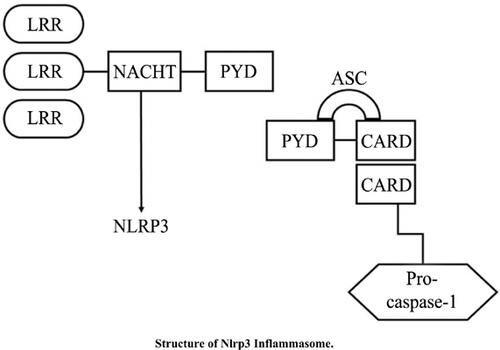Current Protein & Peptide Science ( IF 1.9 ) Pub Date : 2021-02-28 , DOI: 10.2174/1389203721999201208200242 Ishita Sharma 1 , Tapan Behl 1 , Simona Bungau 2 , Monika Sachdeva 3 , Arun Kumar 1 , Gokhan Zengin 4 , Sandeep Arora 1

|
Angina pectoris, associated with coronary artery disease, a cardiovascular disease where the pain is caused by adverse oxygen supply in the myocardium, results in contractility and discomfort in the chest. Inflammasomes, triggered by stimuli due to infection and cellular stress, have been identified to play a vital role in the progression of cardiovascular disorders and, thus, causing various symptoms like angina pectoris. Nlrp3 inflammasome, a key contributor in the pathogenesis of angina pectoris, requires activation and primary signaling for the commencement of inflammation. Nlrp3 inflammasome elicits out an inflammatory response by the emission of pro-inflammatory cytokines by ROS (reactive oxygen species) production, mobilization of K+ efflux and Ca2+ and by activation of lysosome destabilization that eventually causes pyroptosis, a programmed cell death process. Thus, inflammasome is considered to be one of the factors involved in the progression of coronary artery diseases and has an intricate role in the development of angina pectoris.
中文翻译:

了解炎症小体在心绞痛中的作用
心绞痛与冠状动脉疾病有关,冠状动脉疾病是一种心血管疾病,疼痛是由心肌供氧不良引起的,会导致胸部收缩和不适。由感染和细胞应激引起的刺激引发的炎症小体已被确定在心血管疾病的进展中发挥着至关重要的作用,从而引起心绞痛等各种症状。 Nlrp3 炎症小体是心绞痛发病机制的关键因素,需要激活和初级信号传导来启动炎症。 Nlrp3 炎症小体通过 ROS(活性氧)的产生、K +外流和 Ca 2+的动员以及通过激活溶酶体不稳定而释放促炎细胞因子来引发炎症反应,最终导致细胞焦亡(一种程序性细胞死亡过程)。因此,炎症小体被认为是参与冠状动脉疾病进展的因素之一,并且在心绞痛的发展中具有复杂的作用。











































 京公网安备 11010802027423号
京公网安备 11010802027423号